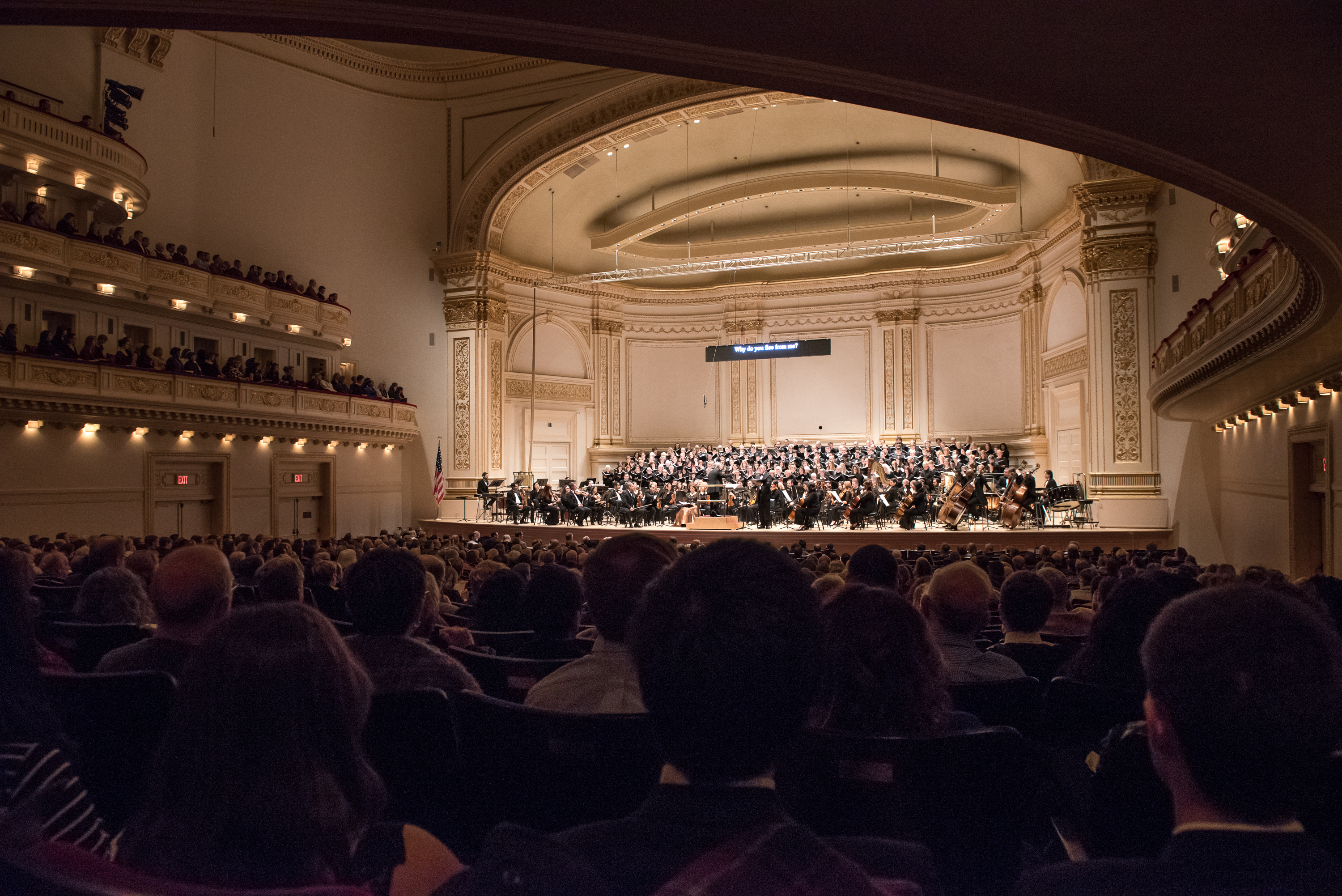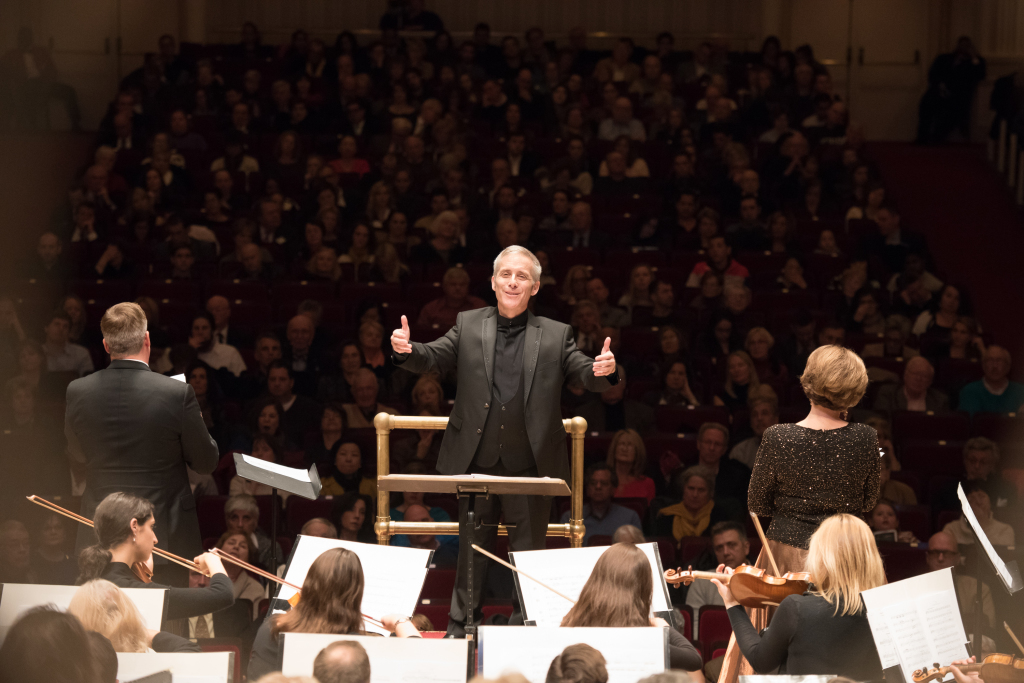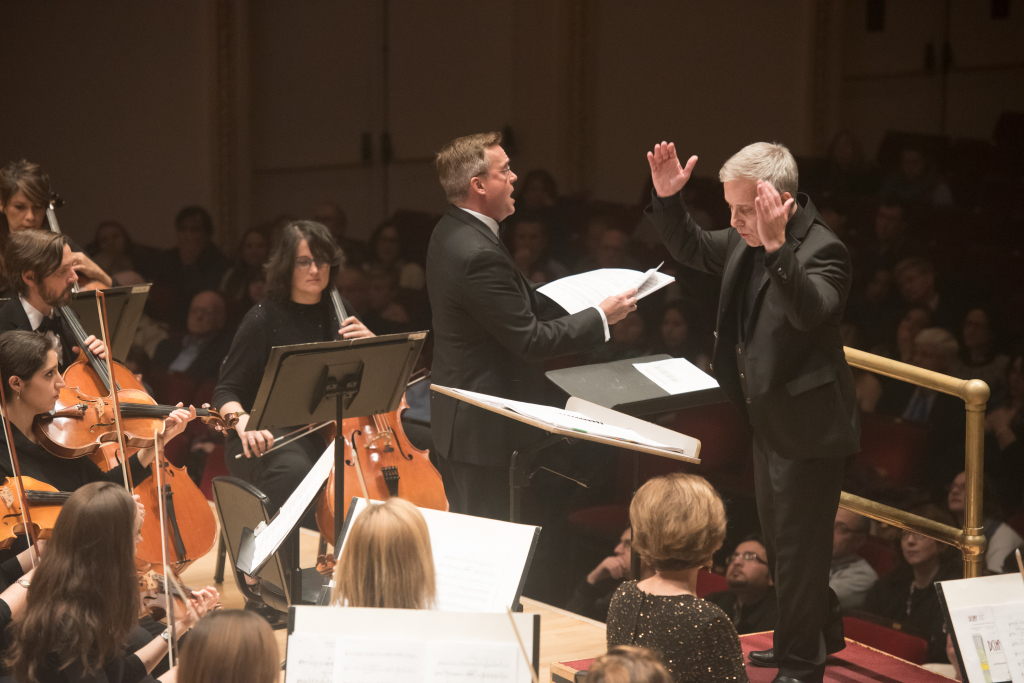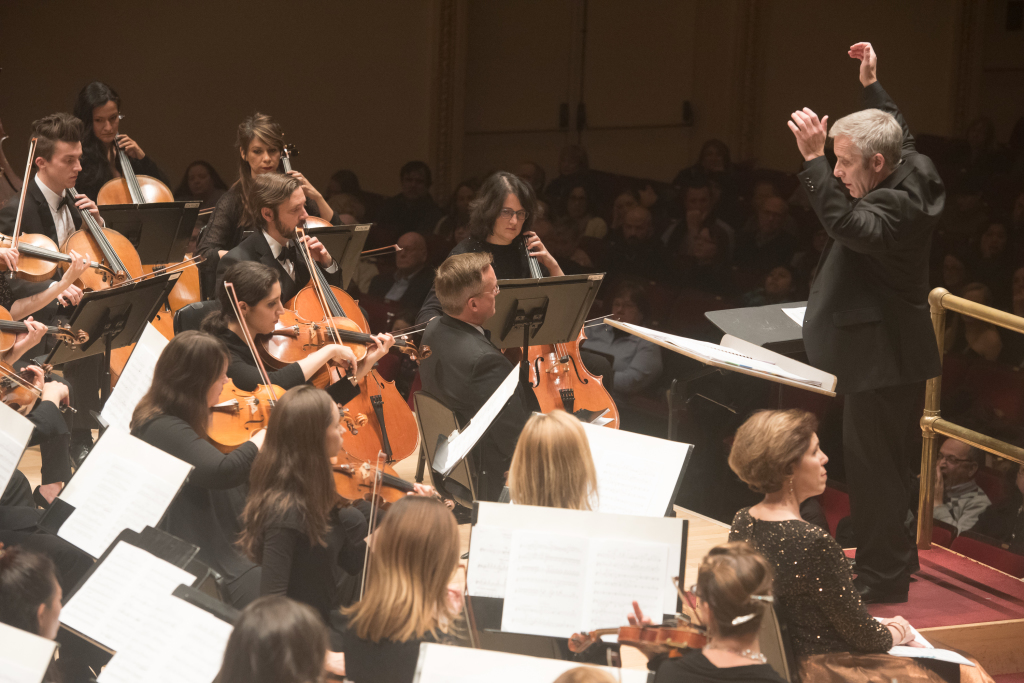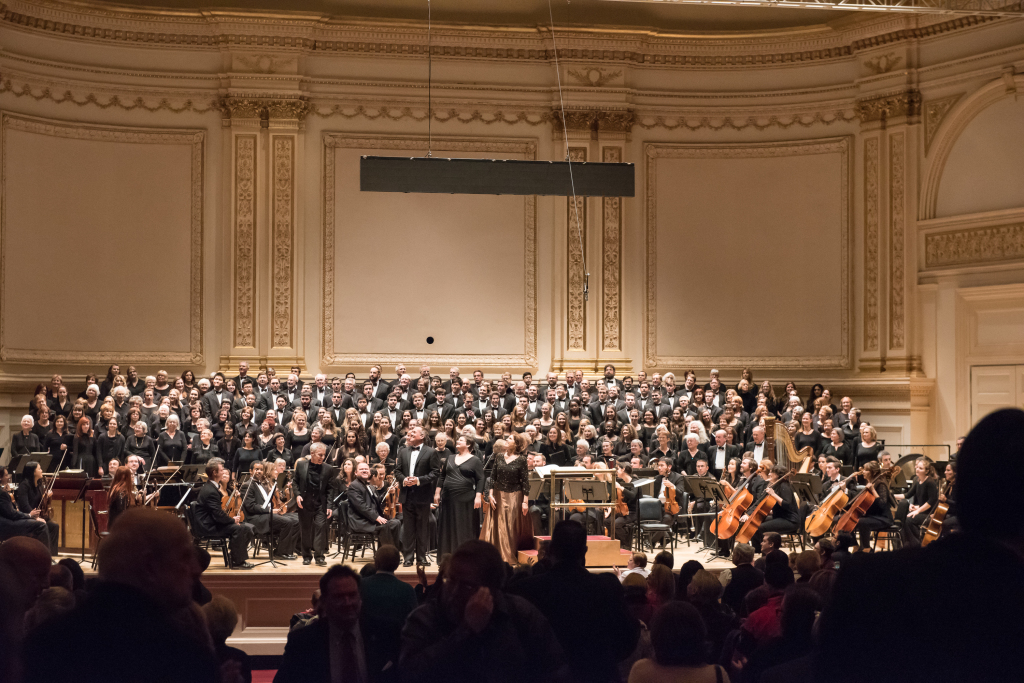Distinguished Concerts International New York (DCINY) is well-known for bringing talented groups from around the globe to New York to appear on the stages of venues such as Alice Tully Hall, Avery Fisher Hall, and of course, Carnegie Hall. On November 21, 2014, DCINY presented a program entitled Carmina amoris: Songs of Love. Featuring the music of Steven Sametz and the vocal talents of Lehigh University, from Bethlehem, Pennsylvania, it proved to be a richly rewarding experience for performer and listener alike. On the program were two works: I Have Had Singing, and Carmina amoris (Songs of Love), in its New York premiere. Mr. Sametz conducted his own works.
As the chorus members filed onto the stage, my eyes were drawn to something I had not previously experienced at a DCINY concert. Suspended above the stage was a very large LED device on from which the audience could read the lyrics to the works displayed in letters at least a foot high. Not only did this display help draw the eyes from the printed program to the stage, but also had the added benefit of completeness, as the printed program could not reasonably have included all material in a cost-effective way.
The program opened with I Have Had Singing, a short work that takes it lines from the words, quoted by writer Ronald Blythe, of an aged horseman from Suffolk, England, who in the middle of telling the story of his rather hardscrabble life, stopped to say, “but there was always singing; the boys in the fields, the chapels were full of singing. I have sad pleasure enough; I have had singing.” Mr. Sametz’s work captured the essence of these words with fitting musical simplicity and poignancy. Bolstered by the voices of singers who sang from within the audience (a large number only a few feet from me), this music was an enchanting start to the night.
Carmina amoris (Songs of Love) is an hour-long, six-movement Choral Symphony, which could be subtitled “Do those who love create dreams for themselves?” – a recurring line in the work. Mr. Sametz carefully selected writings from epigrams, marginalia, and letters from clerics and nuns from the fourth to thirteenth centuries. These medieval texts prove that while we live in an age of technological wonders, in matters of love we are no more advanced than our so-called “dark ages” ancestors. One could even say that we could learn much from the reading of these beautifully written texts, in our age of 140-character missives and acronym-laden sentences.
The opening movement, Quo fugis amabo? (Where do you flee?), is the longest of the works six movements, at twenty minutes. It tells story of lovers separated by the sea, with the sounds of the waves landing on the shore expressing the longing for each other across the distance. Introduced in the first movement is Ausonius’s fourth -century text: “But do we believe that those who love create dreams for themselves?” Tenor soloist William Burden projected the emotions with great feeling and a powerful voice, although he was at times overwhelmed by the large forces behind him. Soprano Carmen Pelton handled the demands of her part, with its frequent forays into the stratospheric range, with the polished technique and confidence of the excellent artist that she most assuredly is. The second movement, Tarantella- Veni, dilectissime (Come, dearest love) is a three-minute outburst of adolescent ardor in the style of the frenzied dance. Mr. Burden delivered his words in a rapid-fire manner, but the diction and clarity were razor sharp- no small achievement! The third movement, Planctus (Lament) is a largely wordless song for an off-stage soprano. The distant sounds and the sparse text are strongly suggestive of the idea that one without love is like a voice without sound. Soprano Tami Petty sang from the very top balcony, hidden in the corner, stage left. She delivered a performance of great beauty, conveying heartbreak as she navigated the extremes of register with brilliance. The movement ends in a nightmarish way, as the chorus ends with the words “a voice without sound.”
The fourth and fifth movements take the form of letters and prominently feature Ausonius’s motto at the end of each movement. The fourth movement, entitled Philomele (To Philomela), is filled with the songs of birds and once again featured Ms. Pelton’s amazing coloratura voice, while the fifth movement, entitled Ego per te (I for you), begins as a duet between lovers before the oft-asked question appears again. Ms. Pelton and Mr. Burden were sublime in duet.
The sixth and final movement, Invehar in Venerem (Venus be damned!) was a turn in a completely different direction! Gone is the lamenting, the longing, the romantic- this is a ten-minute romp filled with displays of temper, vase-breaking, chair-throwing, and hot-blooded passion. The percussion section of the Distinguished Concerts Orchestra set the mood with a fortissimo rhythmic display on a full battery of drums, punctuated by frequent explosive outbursts of sound. The chorus hissed the text in a most sinister fashion, only to be temporarily interrupted by Ausonius’s motto. This interruption was short-lived, though, and the mood shifted back to the angry ranting, building into a wild cacophony with the chorus, orchestra, and soloists building to a fever pitch until all finally exploded. It seemed counter-intuitive to end with such a fiery movement after the others, but after giving it some thought, it seems to me perfectly placed, and in any case, it was a great crowd pleaser, as evidenced by the reaction of a long and raucous standing ovation. Camina amoris is a work that I highly recommend that the reader hear if he ever has the opportunity to do so.
Congratulations to Mr. Sametz, who not only proved to be a gifted composer, but an excellent and animated conductor. The Lehigh Chorus was well prepared and it showed in a fine performance. Kudos go as well to the fine playing of the Distinguished Concerts Orchestra.

